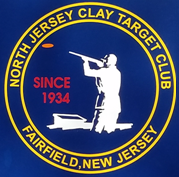

 |
North Jersey Clay Target Club
Northern New Jersey's Premier Trap Shooting Venue |
 |
Trapshooting is a specific form of clay target shooting. Trapshooting is a game of movement, action and split-second timing. It requires the accuracy and skill to repeatedly aim, fire and break the 4 1/4 inch discs which are hurled through the air at a speed of 42 MPH, simulating the flight path of a bird fleeing a hunter. Trapshooting's continual growth and expanding popularity is due to the fact that people of all ages, incomes and abilities can compete. Nine year old boys shoot alongside 90 year old men. Many 70-year olds have been in the sport 55 years and some began just two years ago. Trapshooting's participants include millionaires and hourly wage earners, inventors and businessmen, housewives, former sports figures in other fields, professional men and women, farmers, truck drivers, musicians, actors and students. The shooter is required to shoot at a target after he calls "pull." It does not matter in scoring if the shooter breaks off only a small piece of the target or whether he shatters the target. The target is considered a "dead" bird if a single discernible chip is seen. If the target is hit it is "dead." It is the shooters responsibility to check his own score after each round of 25 targets. Registered trapshooting is competition that is regulated by the Amateur Trapshooting Association. Gun clubs hold shoots in accordance with ATA rules, but they must apply and register for each shoot. All participants of these shoots must be ATA members. The shooters scores are recorded in the ATA office where all records are kept and yearly averages computed. The records are used for handicapping and classifying shooters. In registered trapshooting, the rules specify that targets must be thrown no less than 48 yards no more than 52 yards and should be between 8 and 12 feet high when the thrown target is 10 yards from the trap house. Shooters stand a minimum of 16 yards from the trap houses. If you are interested in learning more about Registered ATA targets, Roger Cox of Amarillo Texas has prepared an eleven page document that goes into detail. You can down load the PDF version by clicking on: Intro to Trap Shooting Booklet TRAP SHOOTING DISCIPLINES
DOUBLESDoubles was added to tournament play in 1911. It is a modified version of Singles, but it is more difficult because shooters must break two targets fired from the trap house simultaneously. One clay pigeon flies to the left while the other flies to the right. The target path remains constant, but the challenge is if the shooter can hit both targets before they hit the ground. Each target is scored individually, not as a pair. Some shooters use a shotgun with two barrels for doubles and one with a single barrel for singles and handicap. HANDICAPHandicap is considered the most prestigious event in trapshooting. As in other sports, handicapping strives to make the competition equal. The is accomplished by having the more skilled competitors stand further away from the trap house. Based on a shooter's past performances, a shooter is assigned a handicap distance which he/she must shoot. A competitor with a high handicap will shoot no closer than the 19 yard line, while the most skilled shooter is placed at the 27 yard line where breaking clays is extremely difficult. WOBBLESWobbles is played like singles with two very important differences. The game of Wobbles was designed to come as close to wing shooting as possible. The targets can be thrown faster or slower than normal targets. They can be thrown higher or lower and at wider angles than singles. The other big difference is that although Wobbles is a single target game you are allowed to take a second shot at the target if you miss with the first shot! |
Five Stand is a type of shotgun sport shooting similar to sporting clays, trap and skeet. There are five stations, or stands and six to eighteen strategically placed clay target throwers(called traps). Shooters shoot in turn at various combinations of clay birds. Each station will have a menu card that lets the shooter know the sequence of clay birds he or she will be shooting at (i.e. which trap the clay bird will be coming from). The shooter is presented with 5 targets at each station, first a single bird followed by two pairs. Pairs can be either "report pairs," in which the second bird will be launched after the shooter fires at the first; or "true pairs" when both birds launch at the same time. After shooting at the 5 birds on the menu at that station, the shooter proceeds to the next stand, where they find a new menu of 5 targets. Typical five stand targets are a rabbit, chandelle, overhead, standard skeet high house and low house shots, teal (launched straight up into the air), trap (straight ahead from ground level), and an incoming bird. Our Five Stand will be set up between Fields 1 & 2 and feature 5 trap machines. |